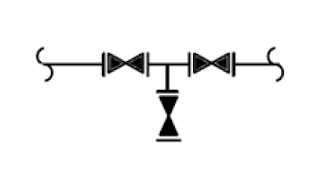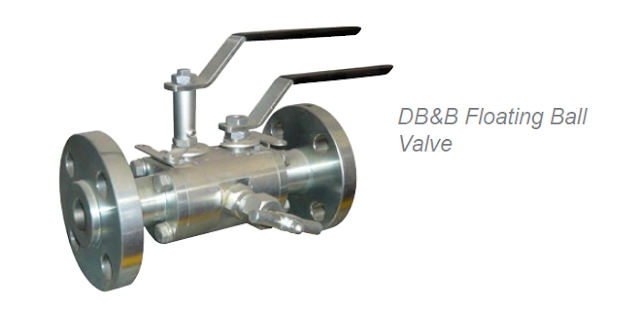A double block and bleed valve is a type of valve used in industrial and process applications to isolate a section of a pipeline, while simultaneously providing a mechanism to drain or vent any fluid that may be trapped between the valve’s two sealing surfaces. Essentially, it is two separate valves, usually ball valves, with a third valve, typically a needle valve, between
them. The needle valve is used to bleed off any fluid between the two ball valves before the valve is opened or closed, providing a safe and efficient method of isolating a system.
Double block and bleed valve (DBB)
DBB valve have become increasingly popular in the oil and gas industry, where they are used to isolate equipment and control fluids. These valves are critical to the safety of personnel and equipment, as they provide a reliable and efficient way to prevent fluid migration, pressure buildup, and the potential for leaks or spills.
Construction of Double Block and Bleed Valve
A double block and bleed valve is constructed with two separate ball valves connected by a central cavity or manifold that contains a needle valve. The ball valves are designed to have a sealing surface that connects to the pipeline, and a separate sealing surface that connects to the manifold. The central cavity is used to bleed any trapped fluid or gas that may exist between the two ball valves, and the needle valve is used to control the flow of fluid or gas during operation.
The ball valves used in double block and bleed valves are typically made of materials such as carbon steel, stainless steel, or other alloys, depending on the specific application. The ball valves are generally designed to be full port, which means that the diameter of the ball is the same as the diameter of the pipeline, to minimize pressure drop across the valve.
The needle valve used in double block and bleed valve is typically a high-precision valve that is designed to provide fine control over the flow of fluid or gas. Needle valves are often made of stainless steel or other high-performance alloys, and are designed to withstand high pressures and temperatures.
Working of Double Block and Bleed Valves
The working of a double block and bleed valve is relatively simple. When the valve is in the open position, fluid or gas flows through the valve and through the pipeline. When the valve is closed, the ball valves on either side of the manifold are closed, effectively isolating the pipeline from the rest of the system.
Before the valve is opened or closed, the needle valve in the manifold is opened to allow any fluid or gas that may be trapped between the ball valves to be bled off. This helps to prevent pressure buildup, which can lead to leaks or spills. Once the trapped fluid or gas has been bled off, the ball valves can be safely opened or closed.
Applications of Double Block and Bleed Valves
Double block and bleed valve are commonly used in a variety of industrial applications, including oil and gas production, petrochemical refining, and power generation. They are often used to isolate equipment, such as pumps, compressors, and storage tanks, to allow for safe maintenance and repair.
In the oil and gas industry, double block and bleed valve are used to isolate sections of pipeline during production, storage, and transportation. They are also used in emergency shutdown systems to prevent the spread of fluid or gas in the event of a leak or other safety hazard. These double block and bleed valve play a very important role in isolation.



1 thought on “Double block and bleed valve”